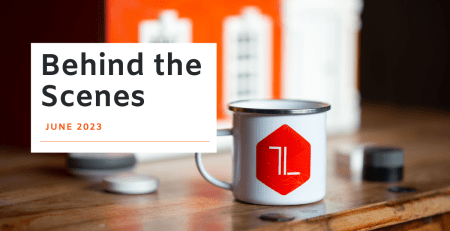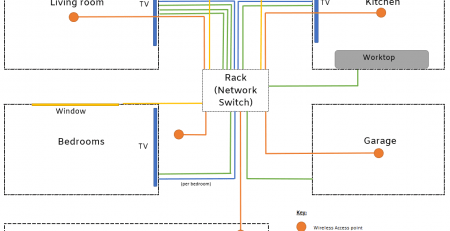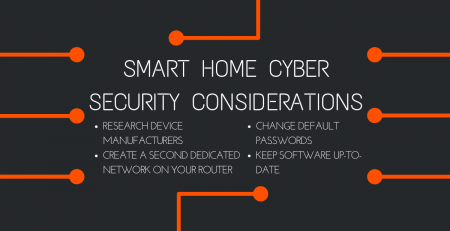How can smart home tech make my home more energy efficient?
Estimated reading time: 8 minutes
Smart home and Internet of Things (IoT) technologies are revolutionising the way we approach managing our homes, providing new opportunities for accessible, convenient ways to conserve energy and minimise our carbon footprints.
In this blog, we’ll take you through some of the key benefits of adopting smart home technologies, typical use cases, some things to consider when it comes to data management and the potential negative impacts.
What are the environmental benefits of smart home technologies?
The primary benefit is digitising the control systems to allow automations to be set up which can reduce energy consumption. Automations vary in complexity, with some being set up manually based on inputs like the time of day and temperature and at the more complex end of the scale Artificial Intelligence (AI) can be used to detect patterns in the conditions and make adjustments based on this data. The other benefit, which depends on your own behaviours and actions is, armed with more data this can increase your understanding of your energy consumption so that you can make adjustments or look for alternative ways to reduce your demand. This could be not using high demand appliances in peak time or replacing older appliances with more energy efficient systems. In addition to energy, smart technologies can help you to understand your use of other resources such as water. Finally, smart technologies can facilitate the optimisation of energy generation with renewables.
What are the main use cases of smart home technologies?
Smart Heating:
This is one of the biggest areas where savings can be made but can also be complex depending on the design and age of your heating system. While less common in homes in the UK smart controls can also be useful for optimising cooling systems. By installing smart TRVs (Thermostatic Radiator Valves) and wall thermostats you can automate temperature control and even adjust the temperatures remotely.
Related to heating is ventilation and air quality. You can install smart monitoring devices that will help ensure humidity isn’t too high and ventilation is sufficient. Some systems can send alerts to let you know to open a window. This can be made even smarter if you add magnetic window sensors that know whether the windows are open or closed, and can therefore switch off your heating when you open a window so you are not wasting energy.
A less seldom considered option to reduce energy costs is making window coverings smart. For example, automating the closing of window coverings to provide shade in summer and help keep the heat in at night.
An additional step that you could consider is using automations which integrate with weather forecasts to optimise the efficiency of the heating controls.
Smart Lighting:
The first simple step you can take is to choose energy efficient LED bulbs. There are a few options for smart lighting. Most people purchase smart bulbs, however the downside of this is that the manual wall switch needs to be left on, and if someone turns it off by accident then the remote control will not work. It can be confusing for people to change their habits of using the manual wall switch. A better option, but one that would need specialist support is to install a smart relay into the wall switch. This allows the switch to be used as normal, but with the added benefit of smart control, such as automating the lights to turn on/off based on schedules, light levels, sunrise/set times and occupancy. When integrated with a voice assistant, lighting control becomes very intuitive and convenient. For example, realising you’ve left the living room light on when you go upstairs in the evening, you can just say “Alexa, turn off the living room light”.
We’ve talked about some of the benefits of smart window coverings, the additional benefit of automating them is it can maximise natural light.
The great thing about LED lights is they make wonderful feature and task lights. Consider using LED task lighting in places where you need extra light like the kitchen and bathroom.
Smart Appliances:
We have more electronic appliances than ever before in our homes. For most of them, you probably haven’t given much thought to how much energy they use, even if you already have a smart meter, the data that these power monitors provide is quite limited as it is your combined energy usage. Smart appliances and plugging in your device via a smart plug can allow you to monitor energy usage at an individual appliance level. It can make it super easy to switch off appliances instead of leaving them on standby, and some will automatically power down when not in use.
Some of the appliances in our home have a significant power demand. You could see if an off-peak tariff from your energy supplier might help reduce your bills, so then you can automate laundry and dishwasher cycles to run when electricity is cheaper.
Renewable Energy:
As we strive to make our homes more sustainable and reduce our carbon footprint, technologies like solar panels, heat pumps, biomass boilers and wind turbines are becoming more common. These technologies can often be optimised even further through Integration with smart systems. For example, to optimise the flow of electricity to power the home and feed into the grid and make the most of the feed-in tariffs available. A really smart idea is to use excess power to heat a water storage tank, that can be used later on to heat the home.
Similarly, as transportation is electrified, it makes sense to integrate the smart home with electric vehicles to control and track charging. In some arrangements, the car battery can be used for storage of excess renewable energy and feed it back to the home if needed.
People are becoming more aware about the climate change impact of electricity generation. In a smart home, you can set it up so that you know when electricity from the grid is being produced by renewable energy and plan to use large appliances then. This might not have an impact on your bills, but you will have reduced your carbon footprint.
Additional Use Cases:
If you’ve ever had a leak, you’ll know that it can be a very costly thing to fix the damage that it can cause. Even something as simple as a sink or bath overflowing or a burst pipe due to cold weather can cause a lot of stress, especially if it is not identified quickly. Installing a smart leak detector can prevent some of the headache, with the added benefit of ensuring that you’re not wasting water (even more important if you are on a paid water meter).
The majority of people now use a smart phone. This opens up the possibility of using the built-in GPS location to set up geofencing. This is where your phone shares your location so your house “knows where you are” and can automate things like the heating and lighting accordingly. Imagine coming home on a dark night and the outside light is already on for your arrival.
Recycling waste has become more complicated in our modern world with most homes having multiple bins and different collection cycles. The Alexa Bin Calendar voice app is a super simple way to always know which bin needs to go out on bin day.
What about my data from the smart home, surely that has an environmental impact too?
It is true that both controlling the devices and the data that is collected and stored have an environmental impact. The size of this impact is difficult to quantify but is proportionally small. You can take steps to reduce this, such as ensuring smart devices only transmit necessary data to perform their function. Consider what data that you want to retain and where this data will be stored, i.e. locally or in the cloud. Ensure that data is deleted after a set period if no longer required. This will reduce the energy usage and reducing how often the smart device sends data will help to preserve battery life.
What else do I need to consider when thinking about upgrading my home to a smart home?
There is an investment cost to purchase and then run the devices and system. It can be hard to know which brands and devices are compatible which can lead to spending more money than you need to, or making mistake purchases.
The ecosystem is still relatively new, obsolescence is very common. Manufacturers may not be able to continue support or may introduce future subscriptions for you to be able to maintain your service.
As previously discussed, data processing in the cloud can consume large amounts of energy and water for cooling. Further to this there is very little transparency around the environmental impact of systems that use AI for data processing.
Bonus Tips
Prioritise investment in energy efficiency measures like insulation and draft proofing over fancy tech. Start small – practical use cases can be a great hook/intro. Prioritise privacy, data and ethical aspects. Make sure to dispose of your e-waste responsibly.
We hope that this brief overview has helped you to learn about how to integrate energy efficient smart home automations into your home, how to minimise the energy requirements of these systems and how to be greener about your data usage. When implemented holistically, you could reduce both your household bills and emissions while enhancing the comfort and convenience in your living space.
We know that it can be overwhelming researching and trying to choose what smart home systems will best suit your needs. Don’t hesitate to get in touch with us if you need some support. We offer a range of services from recommending devices, right through to full purchase and installation. We’re also happy to help you troubleshoot existing systems to get them working better for you and make sure that you maximise your investment.












Leave a Reply